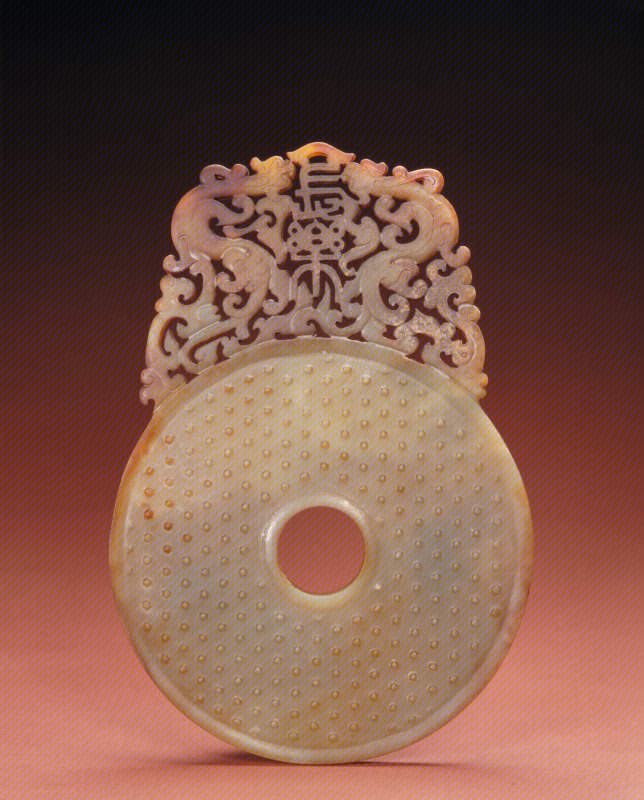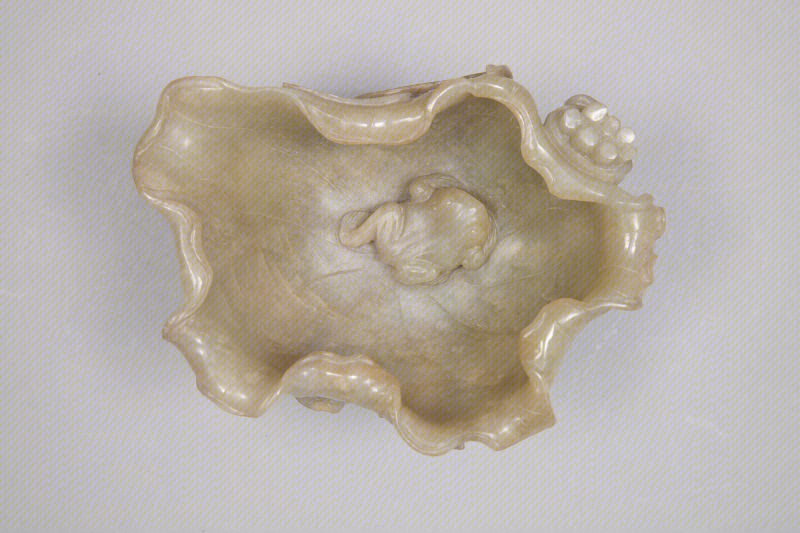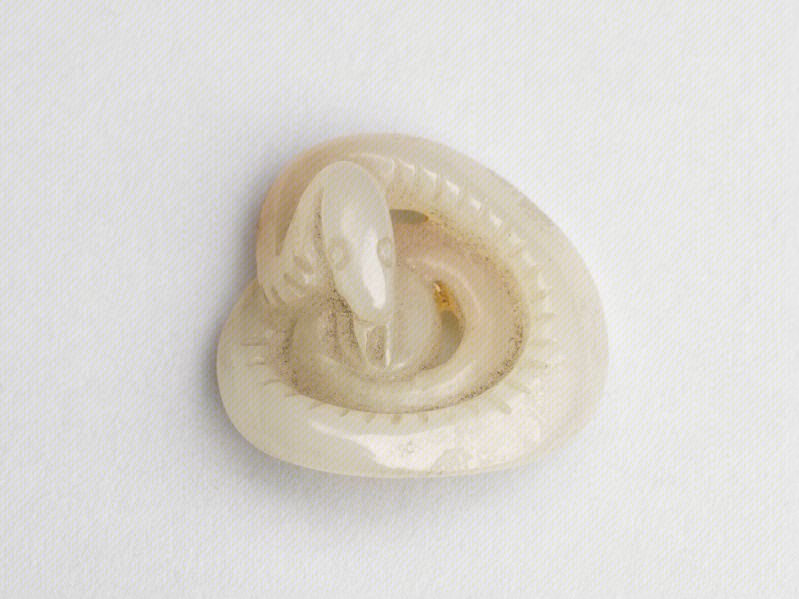
青玉谷纹璧
Category:
Jade
Period:
Han dynasty
Quarried from Hetian in northwest China's Xinjiang Uyghur Autonomous Region, the jade is pale green with reddish-purple specks. The round jade disk is embellished with an elaborate extension carved in openwork. On this extension, two exquisitely carved single-horned dragons are arranged symmetrically to flank two traditional Chinese characters for "eternal happiness" (chang le) in vertical layout. The dragons have curved bodies, while their mouths are positioned against either side of the top character, "eternal" (chang). Pierced with a hole in the center, the round disk is carved with patterns of raised curls known as the grain design (gu wen or guli wen). Along the outer rim, the artisans carved a poetic laudatory inscription by the Qianlong Emperor (r. 1736-1795). The inscription is followed by two seals reading "Fragrance of Antiquity" (Gu xiang) and "Utter Simplicity" (Tai pu).
The Han dynasty saw technical innovations in jade carving in terms of style, embellishment, and craftsmanship. Although the bi-disk was a common form of jade carving at that time, the art form was enhanced with even more decorative and artistic features and new elements such as the exquisitely carved extensions and the combination of such techniques as openwork, relief, and intaglio.
Flat with a central hole, a bi-disk served as a ritual object for aristocrats in ancient times. As far as archaeologists have been able to deduce, it was a symbol for Heaven since the ancient Chinese believed Heaven was round. Smaller bi-disks were worn as ornaments or placed on the abdomen of the dead in an effort to preserve the body. Dating to the Neolithic era (ca. 8000 BCE- 2000 BCE), jade bi-disks were continually enriched in design and hierarchical significance. The higher-ranking disks were decorated with grain patterns, while lower-ranking ones featured crosshatch patterns.
The Han dynasty witnessed the improvement of the artistry of jade bi-disks, particularly in terms of craftsmanship. However, production declined in subsequent dynasties until the Ming (1368-1644) and the Qing (1644-1911), when large numbers of imitations, either in jade or glass, emerged at markets and in imperial workshops.
Show All Details
Show Fewer Details
Suggest Feedback








